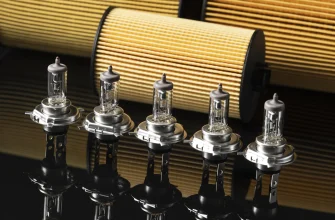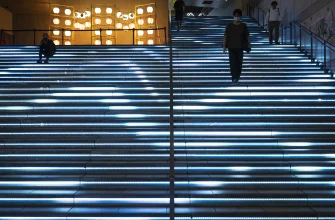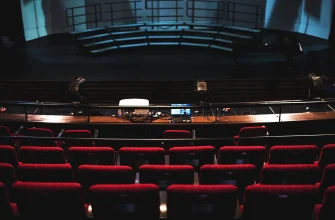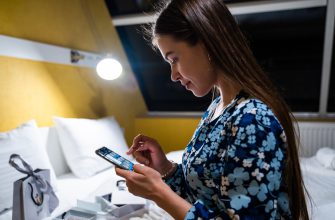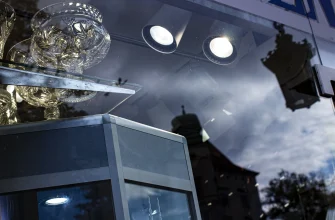Huge office complexes and small individual offices are nothing more than production sites for business. It’s where you receive visitors and conclude deals, solve current problems, and conduct negotiations. It is quite logical that the efficiency and productivity of many business processes directly depends on the proper organization of the office space – it would be a mistake to ignore the contribution that lighting makes to the results of business activity.
Thoughtful lighting in the office makes an impression on visitors, and is subconsciously perceived as proof of the company’s success. But there is another important aspect: lighting affects the performance of office employees, their mood and even their well-being, and thus the efficiency of the entire business. So don’t skimp on lighting your office space. And we’ll tell you how to choose/organize it correctly.
Office lighting organization – solving problems in a complex
To begin with, we need to realize what we want to achieve with the correct organization of office lighting. In other words, we need to define our goals. There are a number of aspects of business activity that depend to some extent on the right choice of lighting:
-
- Productivity. Good lighting in the office helps to maintain a high level of concentration and energy among employees, which contributes to increased productivity.
- Staff health and comfort. The right lighting creates a cozy yet working atmosphere in the office, making it more pleasant and comfortable for everyone. Poor lighting can have a negative impact on well-being, causing general fatigue and eye fatigue, headaches, and other health problems, while good lighting helps prevent these negative effects.
- Safety. This is also a multifaceted problem. Good lighting in the office reduces the risk of injuries and accidents, especially when performing tasks that require precision and attention – it’s about overall workplace safety. Equally important is the safety factor for employees’ eyesight – the absence of flickering/pulsations, insufficient illumination, or vice versa – due to too bright light. Do not forget about the electrical, fire and environmental safety of lighting devices.
- Attractiveness of the office. Properly organized lighting creates a pleasant atmosphere in the office, makes it more attractive to employees and visitors, which can increase the level of trust of customers and partners, and emphasize the company’s professionalism.
- Saving resources. The use of energy-efficient lighting technologies can reduce energy and maintenance costs, which in the long run leads to economic benefits for the entire business.
There are three main types of light sources used in offices and workrooms: traditional incandescent and fluorescent tubes, as well as a new class of lighting devices based on LEDs.
| Type of Light Source | Characteristics | Suitability for Use in Offices |
|---|---|---|
| Incandescent Lamps | Emit warm white light (around 3000K), efficiency does not exceed 5%, sensitive to voltage fluctuations, continuous operation resource within 1000 hours. | Incandescent lamps have 3 main advantages: they provide warm light, have a quick installation process, and are widely compatible with common sockets. However, they have several disadvantages: they get hot, consume a lot of energy, and burn out quickly. |
| Daylight Lamps | Emit neutral white light (5000K), efficiency around 70%, continuous operation resource up to 10,000 hours. | Daylight lamps have suboptimal light quality and lifespan (fluorescent lamps are still in use but less favored). Their “weak link” is gas-discharge tubes, which can have safety issues: flickering light at startup and fading as the resource depletes. More importantly, these lamps contain hazardous substances, leading to challenges with proper disposal. |
| LED Lamps | 95% efficiency, continuous operation resource of 50,000 hours or more. Light temperature and color depend on the type of LEDs used, covering the full spectrum. | LED lamps are the most energy-efficient light source (only 5% of energy is converted into heat). They ensure maximum fire safety and emit evenly bright light without flickering, making them safe for vision. Additionally, LED lamps are nearly 100% environmentally safe as they are made from chemically stable semiconductor materials. |
From a comparison of the main user characteristics of the three common light sources, it is easy to conclude that LEDs are the most suitable for office lighting. Nowadays, there is a tendency to replace incandescent lamps and fluorescent tubes of a similar configuration with LED lighting devices whenever possible, and the industry produces LED lamps with E27/14 bases and T8 LED lamps.
How lighting standards affect the choice of lamps and luminaires for offices
How lighting standards affect the choice of lamps and luminaires for offices
Even if you are planning to install a lamp in your kitchen (an example for clarity), you don’t just take the first lamp you find. You choose it so that its glow is bright enough, with good color reproduction, etc. Choose the glow power according to the installation area – near a window or in a remote corner. You’ll also need to take into account the height of the bulb and the area you want to illuminate – and that’s not all the factors that need to be taken into account even for such a seemingly simple task. And what can we say about the complexity of choosing lighting for an office or other industrial space!
In order to avoid arbitrary and often unprofessional decisions regarding the choice of lighting, the ISO 8995 standard was approved and has been in force in Ukraine since 2002. The international standard does not explain what lighting systems or methods should be. It is only a regulatory framework for the choice of lighting for indoor workplaces to enable people to perform various tasks effectively in the most comfortable and safe conditions.
The international standard ISO 8995-2002 regulates such important indicators as the illumination rate Cd (lux), color rendering index Ra, color temperature (K). For most office work, Ra 80 is sufficient (color reproduction is not crucial), and there are no special instructions for color temperature at all – it is customary to use white daylight of about 5000K. But the illumination standards Cdp (lux) by type of office work differ very significantly – from 300 lux in the reception area to 750 lux at the designer’s workplace.
| Type of Office Space | Illumination Standard (ISO 8995) Ecr, lx | Color Rendering Index, Ra |
|---|---|---|
| Administration, Reception | 300 | 80 |
| Clerical, Project Rooms, Meeting Rooms | 500 | 80 |
| Design Offices | 750 | 80 |
| Archives | 520 | 80 |
The illumination rate (1 Lx = 1 Lm/1 sq. m) takes into account the dimensions of the room, namely the office area. Lighting devices are selected according to the intensity of the luminous flux (Lm), for this purpose, the corresponding standard Cdp (Lx) is multiplied by the area of the corresponding room (sq. m).
Lighting parameters are regulated for general lighting. This point should be discussed separately – it will be useful for choosing the type of lighting devices for the entire room or for a specific workplace.
Types of office lighting
For the correct organization of lighting, it is clearly not enough to calculate general lighting alone. There is no office where, for example, only ceiling LED panels are installed. And not a single table lamp. And in a large office complex, a whole lighting scheme is initially designed, which includes various types of lighting:
General lighting
Experts also know it as “ambient”. This is the main lighting of the entire office space (it is regulated by ISO 8995-2002). Its purpose is to create a comfortable and safe space for work, providing a sufficient level of brightness without shadows or glare. To solve this problem, it is necessary to distribute the lamps evenly over the area and height, use light colors of the walls and ceiling to additionally reflect light and increase its brightness. Most often, ceiling LED panels are used for the main lighting, and LED chandeliers and other lamps are used for small rooms.
Local lighting
The purpose of local lighting is to compensate for the lack of general lighting and contrast at the workplace of an office employee. This is light directed at specific work areas or objects, such as a desk, a rack with documents. Its purpose is to create accents or provide additional lighting for performing tasks. To implement local lighting, you can use table lamps or special spotlights, the light of which can be directed to the desired area.
Decorative lighting
To create a certain atmosphere and increase the attractiveness of the office in the eyes of visitors, decorative lighting is used to make the office interior not only unique, but even helps to promote the company’s brand. Decorative lighting can be used to structure the space, making office navigation more obvious and highlighting certain areas. Different types of LED lamps can be used to implement decorative lighting, including pendants, table lamps, sconces, LED strips and various types of colored backlighting or accent light.
Emergency lighting
It is mandatory in premises over 60 square meters – these are the legal requirements for organizing lighting in office and other public buildings. The main purpose of emergency lighting is to provide sufficient visibility during an evacuation so that employees and visitors can leave the building safely. Emergency lighting helps improve visibility and orientation in the event of smoke, fire, or other emergencies. Emergency lighting is activated in the event of an emergency when the main power is cut or a fire detector is triggered. Evacuation lighting is usually powered by batteries that are charged in the normal mode and turn on automatically when the mains power is interrupted. These luminaires are located in such a way as to provide uniform illumination of evacuation routes and exits – special light indicators with infographics, such as arrows, “running man”, etc. are used.
Conclusions
Office lighting is not only about design, glitter and ostentatious chic with an eye to visitors. As a part of a well-adjusted mechanism, lighting is responsible for the effective work of employees. The psychological atmosphere in the team also largely depends on the choice of lighting, as does the health of office workers – eye strain with a lack of light not only causes visual impairment, but can also lead to serious illness. Businesses also suffer when lighting is chosen incorrectly, as the productivity of office employees decreases.
To avoid all these unpleasant consequences, you need to take a very responsible approach to the selection and organization of office lighting. Only such an approach contributes to the creation of a comfortable and productive office environment, which ultimately increases the efficiency of the entire business.
If you have any questions about organizing office lighting or choosing lighting systems, don’t waste time – contact us at LED Story as soon as possible. Our experts are always in touch and will be happy to help you!


